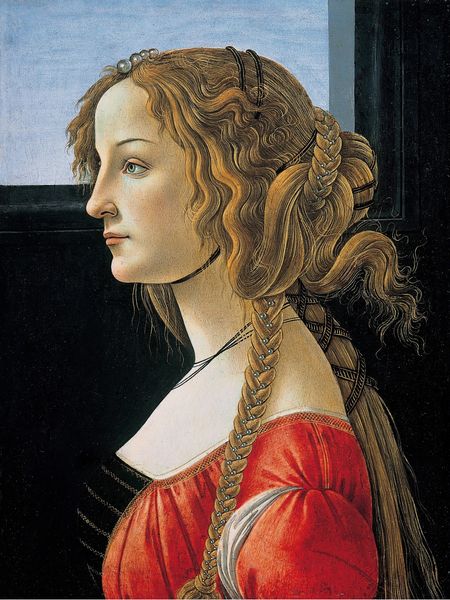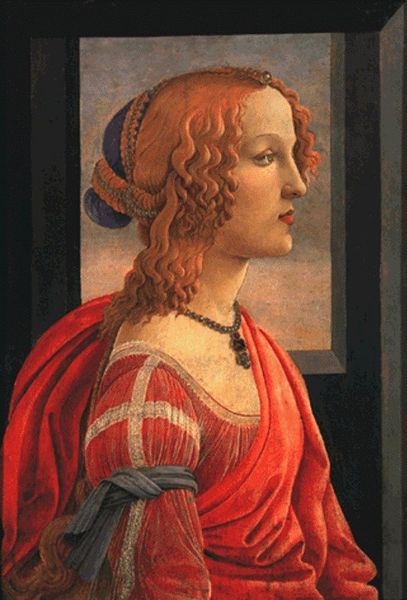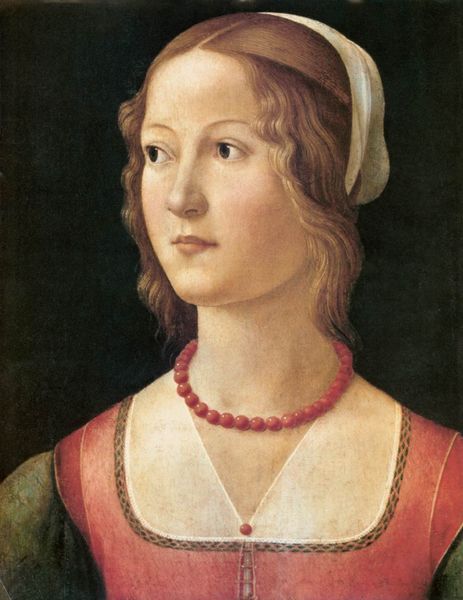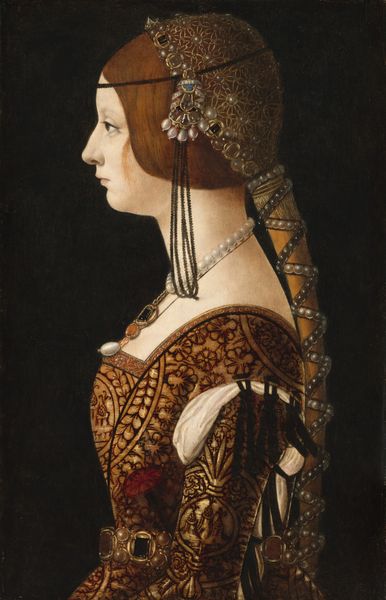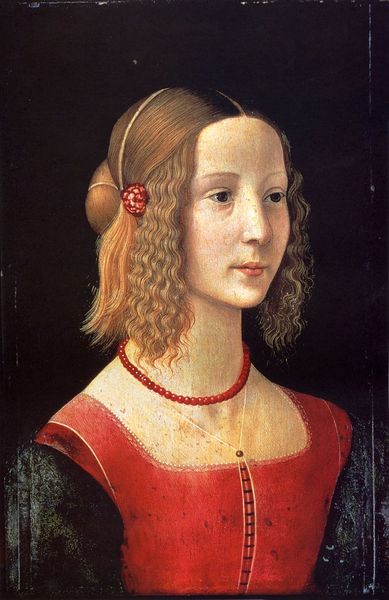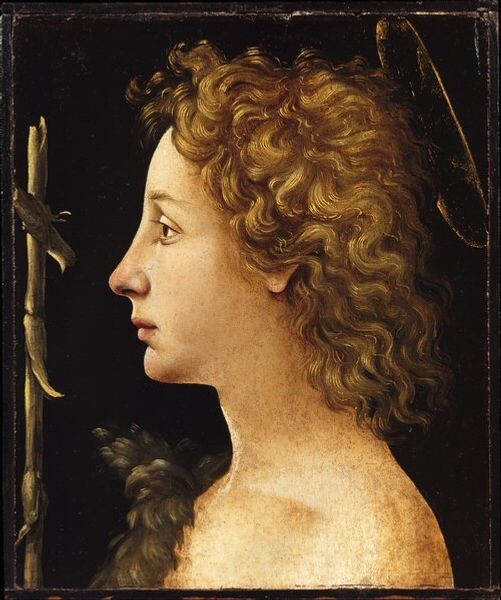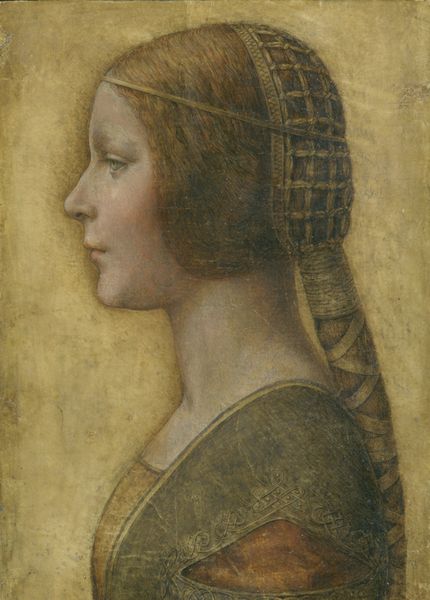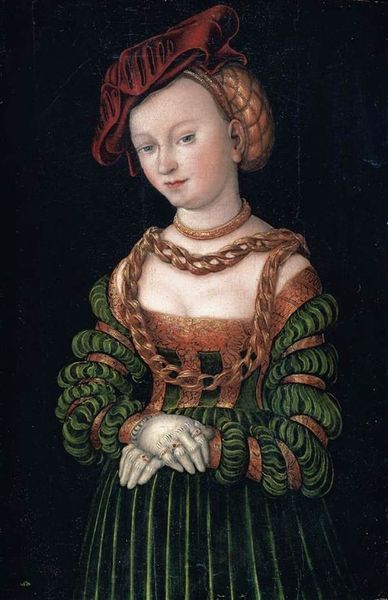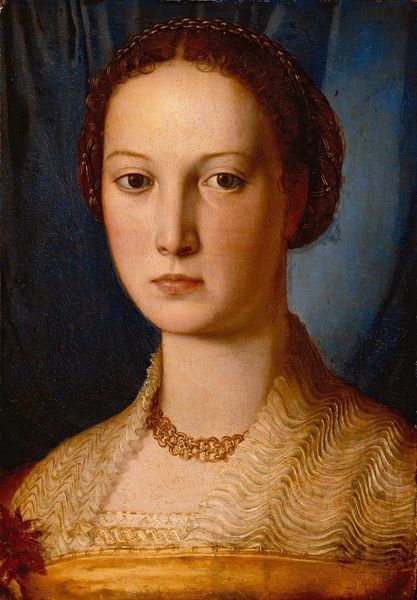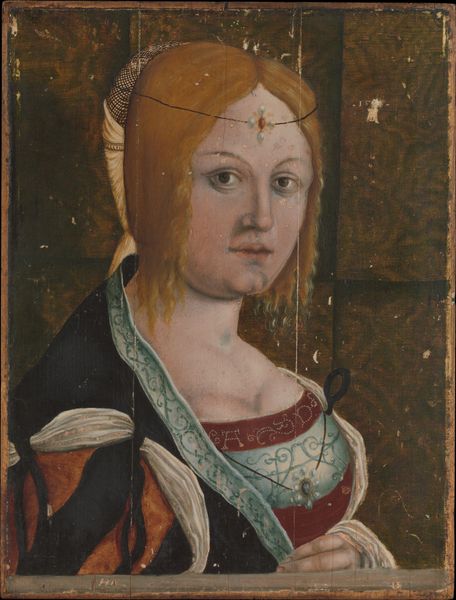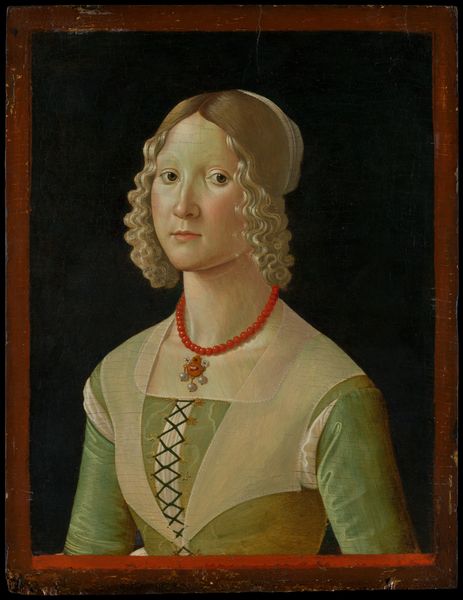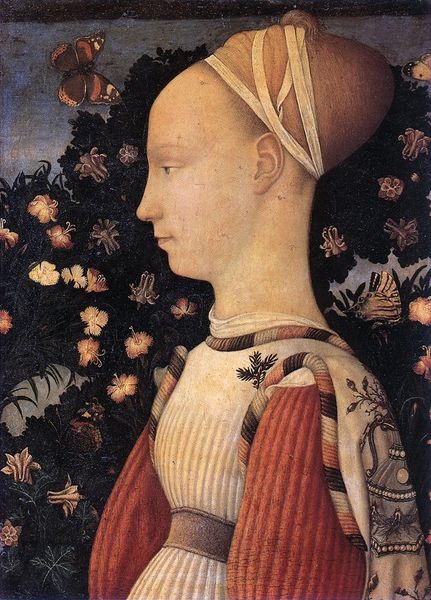
Idealised Portrait of a Lady (Portrait of Simonetta Vespucci as Nymph) c. 1480 - 1485
0:00
0:00
tempera, oil-paint
#
portrait
#
self-portrait
#
tempera
#
oil-paint
#
landscape
#
11_renaissance
#
oil painting
#
12_15th-century
#
history-painting
#
italian-renaissance
Dimensions: 81.3 x 54 x min. 0.3 cm
Copyright: Public Domain
Sandro Botticelli likely painted this portrait of Simonetta Vespucci in Florence, using oil and tempera on wood. Look closely, and you’ll notice how the material itself influences the appearance, with its smooth surface and luminous colours. This wasn't just a lucky effect; it was carefully achieved through the traditional practices of panel preparation, pigment mixing, and layering of glazes. Botticelli used tempera for the underpainting, which is made by binding pigments with egg yolk, and oil paint to build up the colours and details. The portrait is so striking, because it is a testament to Botticelli’s technical virtuosity and the vibrant artistic culture of Renaissance Florence. The techniques, tools, and skilled traditions used here belong to a broader history of craft and fine arts. The immense labour involved in preparing these materials and executing the painting is easy to overlook, but it's essential to understanding the value and cultural significance of this iconic artwork.
Comments
Join the conversation
Join millions of artists and users on Artera today and experience the ultimate creative platform.
